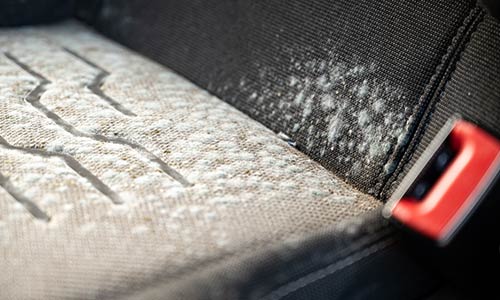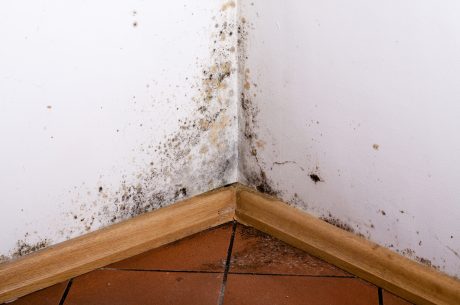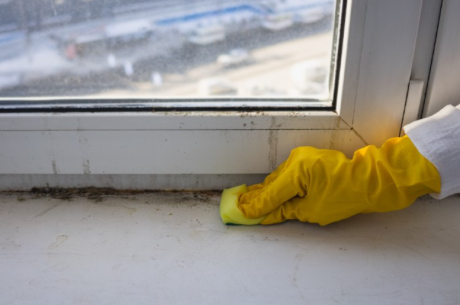Your car is like your safe space and second home, but what happens when an unwelcome guest like mold decides to take up residence? From that musty smell that hits you as soon as you open the door to the unsightly patches creeping across your upholstery, mold in your car is not only unpleasant but also potentially hazardous to your health. Whether it’s the aftermath of a water leak, excessive humidity, or neglect, dealing with mold in your vehicle is a task that shouldn’t be ignored.
But fear not! With the right knowledge and professional help, you can remove mold from your car and restore it to its fresh, clean state.
In this comprehensive guide, we’ll delve into the causes of mold growth in cars and provide you with a step-by-step roadmap to effectively remove mold and prevent its return. So, buckle up as we embark on a journey to reclaim the freshness of your beloved ride.
What Causes Mold To Grow In Your Car?
Mold growth in your car can be an unwelcome surprise, but understanding its causes can help you prevent it from taking hold. Here are some common reasons why mold might decide to make your car its new home:
Moisture: Moisture is the primary catalyst for mold growth, and your car can be a breeding ground if moisture finds its way inside. This moisture can come from various sources such as water leaks, spills, wet clothes or shoes, or even just high humidity levels.
Water Leaks: Leaky windows, sunroofs, doors, or damaged seals can allow water to seep into your car’s interior, creating damp conditions ideal for mold growth. Even minor leaks can lead to significant mold problems over time if left unchecked.
Improper Ventilation: Poor ventilation can trap moisture inside your car, providing the perfect environment for mold to thrive. This is especially true in vehicles that are frequently parked in humid or damp environments.
Dirty Cabin Air Filters: Cabin air filters that are clogged or dirty can restrict airflow inside your car, trapping moisture and creating conditions conducive to mold growth.
Spills and Food Debris: Spills of beverages or food crumbs left behind in your car can introduce organic matter that mold feeds on, accelerating its growth.
Long-Term Storage: Cars that are stored for extended periods without proper ventilation are susceptible to mold growth, especially if they are stored in damp or humid environments.
Interior Material: Certain materials used in car interiors, such as upholstery and carpeting, can absorb moisture and provide a suitable substrate for mold growth if not properly dried.
Precautions Before Removing Mold
Before diving into the process of removing mold from your car, it’s essential to take some precautions to ensure your safety and effectively tackle the problem:
Protective Gear: Mold can release spores that may cause respiratory issues or allergic reactions, so it’s crucial to wear protective gear such as gloves, a mask, and goggles to minimize exposure.
Ventilation: Work in a well-ventilated area to prevent the buildup of mold spores and to allow fresh air to circulate while you’re cleaning.
Remove Valuables: Before starting the cleaning process, remove any valuables or items that could be damaged by cleaning solutions or moisture.
Identify the Source: Try to identify and address the source of moisture that led to mold growth in your car. Repair any leaks or areas of water intrusion to prevent future mold problems.
Test Cleaning Solutions: Test any cleaning solutions or products in an inconspicuous area of your car’s interior to ensure they won’t cause damage to the materials.
Follow Instructions: Read and follow the instructions provided with cleaning products carefully to ensure safe and effective use.
Dispose of Materials Safely: Dispose of any contaminated materials, such as cleaning cloths or protective gear, properly to prevent the spread of mold spores.
How To Remove Mold from Your Car
Removing mold from your car requires a systematic approach to ensure thorough cleaning and prevent its return.
Here’s a step-by-step guide to help you tackle the task effectively:
Gather Your Supplies:
Before you begin, gather all the necessary supplies, including gloves, a mask, goggles, a vacuum cleaner with a HEPA filter, a soft brush or sponge, mild detergent or specialized mold cleaner, upholstery cleaner (if needed), and microfiber towels.
Ventilate the Area:
Open all the doors and windows of your car to allow fresh air to circulate while you work.
Vacuum Thoroughly:
Use a vacuum cleaner with a HEPA filter to vacuum all surfaces inside your car, including the seats, carpets, floor mats, and upholstery, to remove loose mold spores and debris.
Scrub Surfaces:
Mix mild detergent or specialized mold cleaner with water according to the manufacturer’s instructions. Use a soft brush or sponge to scrub the affected areas, focusing on areas with visible mold growth.
Rinse and Dry:
After scrubbing, rinse the surfaces with clean water and thoroughly dry them using a microfiber towel or a wet/dry vacuum cleaner. Ensure that all surfaces are completely dry to prevent mold from returning.
Treat Upholstery:
If mold has penetrated deep into the upholstery or carpeting, you may need to use a specialized upholstery cleaner following the manufacturer’s instructions.
Inspect and Monitor:
After cleaning, thoroughly inspect your car’s interior for any remaining mold or signs of moisture. Monitor the area regularly to ensure that mold does not return.
Can you sit in a car with mold?
While sitting briefly in a car with mold is unlikely to cause immediate harm, prolonged exposure to mold can lead to respiratory issues, allergies, and other health problems, especially for individuals with pre-existing conditions. It’s best to avoid spending extended periods in a car with mold and to take steps to remove the mold promptly to prevent health risks.
How long does it take for a car to mold?
The time it takes for mold to grow in a car can vary depending on factors such as moisture levels, temperature, and ventilation. In ideal conditions, mold can begin to develop within 24 to 48 hours of exposure to moisture. However, it may take longer for mold to become visible or noticeable, especially if it’s growing in hidden or hard-to-reach areas of the car’s interior.
Is mold in a car dangerous?
Yes, mold in a car can be dangerous, especially if left unchecked. Mold releases spores that can cause respiratory issues, allergic reactions, and other health problems, particularly for individuals with asthma, allergies, or weakened immune systems. Mold can also damage car interiors and produce unpleasant odors. Promptly addressing mold growth and taking preventive measures are essential to maintain a healthy and safe environment inside your car.
How to get rid of mold in car carpet?
To get rid of mold in car carpet, follow these steps:
- Vacuum the carpet thoroughly to remove loose mold spores and debris.
- Mix a solution of mild detergent or specialized mold cleaner with water according to the manufacturer’s instructions.
- Use a soft brush or sponge to scrub the affected areas of the carpet, focusing on areas with visible mold growth.
- Rinse the carpet with clean water and thoroughly dry it using a microfiber towel or a wet/dry vacuum cleaner.
- If mold persists, consider using a specialized upholstery cleaner following the manufacturer’s instructions.
- Monitor the area regularly to ensure that mold does not return and take steps to address any underlying moisture issues to prevent future mold growth.
By following these steps and taking proactive measures to address moisture buildup in your car, you can effectively remove mold from the carpet and maintain a clean and healthy environment inside your vehicle.




 PuroClean Emergency Recovery Services
PuroClean Emergency Recovery Services